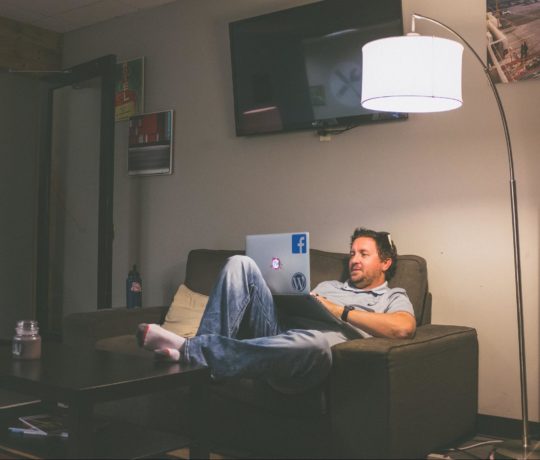
There is always a looming question behind every web design project, and sometimes, it’s one of the hardest to answer:
How much?
When clients ask you how much will you charge him for a web design project, it’s difficult to answer. Perhaps, this question is second to “Do I look fat in these jeans?” asked by your girlfriend. It’s a trap: when you price it too much, you might drive off good business; and when you price it too low, it will look like you’re working for peanuts.
So how much does a web design project really costs?
Of course the best answer here is, it depends. There are so many factors to consider: quality of the project, the designer’s experience, the tools that he will use, and of course, time and effort.
So, let’s rephrase the question and try to make it at least answerable:
How do you determine the cost of web design?
To answer this question, let us look at some of the factors that determine the cost of a web design project:
Your Skills
There is a difference between getting paid $25 and $1500, and it lies heavily on your skills. Of course, having the needed skills like the ability to place elements and use visuals to make the user experience higher is prerequisite for web design and the more you become adept at such skills make the design costs higher. Because unlike other people, you’re not selling a product. You’re selling your expertise.
So now ask yourself the following questions:
- How much do I know about the basics of design?
- Am I above intermediate in HTML/CSS?
- How long have I been designing?
These questions matter. They can determine whether you’ll charge for a small amount of fortune or just some beer money.
Your Competitors
Believe it or not, your competitors can also help you. And not in some Zen voodoo trick out there. They can help you identify your reference point for pricing your clients. Of course, to do this you should have at least an idea of how good your competition is. For example, you wouldn’t benchmark your price to a web design wizard when you yourself haven’t even made it to Hogwarts yet. No. What you should do is to find your match, find someone who are just about the same skill and experience as you.
Your Client

This one’s important as well. After designing for some time, a few years tops, you’ll begin to gain a reputation among clients and you’ll notice that there is something common about them. For example, you started out designing websites for companies whose business are cars and automobiles, a few months later, another company of the same niche comes into your aid, and another until you somehow build a niche of your own.
Well, this is mainly due to word of mouth. But here’s the catch, because your previous clients usually came to you because someone else recommended you, they will most likely arrive at a same offer as what you previously did. And sad to say, at times, the clients offer lower rates despite of a heavier work load.
Of course the dilemma goes way confusing because you now have to choose: lower the price and be underpaid, or increase the rate and possible scare off a client.
So what do you do?
I suggest two things:
First is to increase your rate. Now this might sound a little risky, or maybe even reckless, but think of this, you may lose your clients today but by this time, you now have built a sound portfolio that will surely attract clients who are willing to pay your amount. And maybe, former clients will come to your aid in smaller tweaks so you’ll have nothing to lose.
Second is to explain the price offer raises. Of course, this is a lot difficult but if you want to score this particular client, you have to be assertive in your offer as well. Explain the differences that caused the increase and hope that you two both meet in a common ground.
Your Work
Of course, lastly, is this. Work. As a designer, workloads are not consistent. There will be times that you will be asked to design smaller projects like one-page redesigns, and there are times that you have to build a whole website from scratch.
If you are in the sane mind, you’ll charge differently for these. Charging the same for simpler and more difficult task is like thinking that the energy consumption is the same between walking up through the stairs and using an elevator.
So, as a designer, you have to properly identify how much work will be put in a specific project. Ask yourself:
- How many design revisions will be needed before completion?
- How long will be the deadline?
- How often does the client request for changes?
- How intricate is the design?
Understanding these factors will help you in foreseeing how difficult a project is. And of course, here is where ethics come in play. Some clients, sad to say, are oblivious of the technicalities of design and the web, and so a few lost sheep in the design herd take advantage. Sometimes, they price the design at a high rate even if the task is just installing a WordPress theme. So, be ethical.

In conclusion
Now that you were able to identify the factors, it’s time to compute. Now this is where it gets tricky. You should be able to make both ends meet and try to at least meet the budget of your client. Remember that there is nothing wrong with making money, but if you take advantage of a client, it will look bad on you. But don’t be too hard on yourself and underprice your work. You are an artist and your effort, creativity, and skill should be properly paid for.






 All Websites Should Feature Videos and Here’s Why
All Websites Should Feature Videos and Here’s Why  7 Simple Business Ideas You Can Start from Home
7 Simple Business Ideas You Can Start from Home  Teamstack: Team-as-a-Service Provider with Convenient and Secure Solutions
Teamstack: Team-as-a-Service Provider with Convenient and Secure Solutions  Aviationstack API Review
Aviationstack API Review  The Anatomy of Great Website Design that Google Loves
The Anatomy of Great Website Design that Google Loves